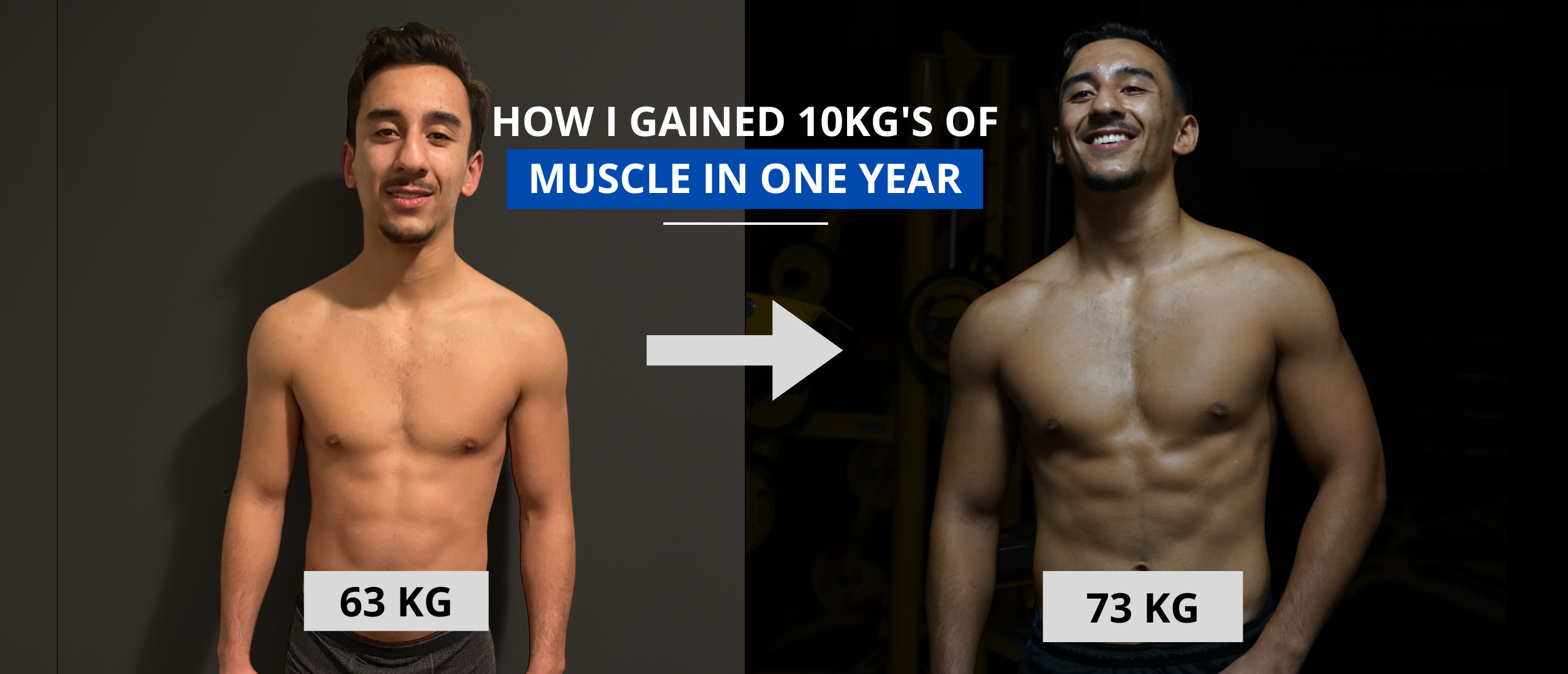
How to gain 10kg's of muscle in one year
Gaining 10kg of muscle in one year might seem like a lofty goal, but with dedication, proper planning, and consistent effort, it's entirely achievable. I embarked on this journey myself and successfully added that coveted lean muscle mass to my physique. In this blog, I'll share my personal experience and the key strategies on how to gain 10kg´s of muscle in one year. Whether you're a beginner or an experienced gym-goer looking to level up your gains, these steps will guide you on your path to a more muscular and sculpted body.
4 Tips on how to gain 10kg's of muscle in one year
1. Consistency is Key
The foundation of any successful muscle-building journey is consistency. As I embarked on my quest, I made it a non-negotiable commitment to hit the gym at least four times a week. Even on busy days, I ensured that my workouts lasted anywhere from 30 minutes to over an hour. The crucial factor here is maintaining regularity in your training regimen. Consistency in your workout routine will lay the groundwork for your progress
"I made being consistent way easier by just minimizing the barrier to do my workout. I train at the closest gym, have my gym shoes nearby my door and I have workout outfits ready in my closets. This way, I just have to put on my stuff and I say: I only have to go for 5 minutes. This tiny goal is then easy to reach and I always get into flow and train longer."

2. A Thoughtful Workout Routine
Building muscle effectively requires a well-structured workout routine. I opted for a simple yet effective approach by focusing on a maximum of three exercises per muscle group. This strategy allowed me to dedicate more time and effort to mastering each exercise and engaging the targeted muscle groups fully. Here's a breakdown of how I structured my workouts:
Compound Movements: I incorporated compound exercises like squats, deadlifts, bench presses, and rows as the core of my routine. These multi-joint movements stimulate multiple muscle groups simultaneously, promoting overall muscle growth.
Isolation Exercises: In addition to compound movements, I included isolation exercises to target specific muscle groups directly. For example, bicep curls and tricep extensions were essential for sculpting my arms.
Progressive Overload: To ensure consistent progress, I practiced microloading. This technique involved adding a small amount of weight to each exercise in every workout. Over time, these incremental increases accumulated, helping me lift heavier weights and stimulate muscle growth effectively.
This is what my training week looked like:
Monday: Upper body day - Bench press, Rows, Dumbell presses and 2 arm exercises.
Tuesday: Legs + abs - Squats, leg extentions, hamstring curls, calf raises, crunches and farmer walks
Wednesday: Rest
Thursday: Upper body day
Friday: Lower body day
Saturday: Padel competition
Sunday: Rest
3. Prioritize Protein Intake
Muscles require adequate protein to repair and grow. I made it a point to consume a minimum of 100 grams of protein daily. This macronutrient is essential for building and repairing muscle tissue, and it's crucial to have a consistent protein intake to support your muscle-building goals. Include lean sources of protein in your diet such as chicken, turkey, fish, lean beef, tofu, and dairy products.
To have a better estimate on how much protein you need, you can use the following formula:
1,8 x kg's of bodyweight" = total recommended protein intake per day in grams
You might ask yourself: "Why so much protein? Because on internet, I see that my daily recommended intake is much lower."
It is indeed that the daily recommended protein intake is lower if you want to stay healthy. But in order to build muscle, and to avoid problems like protein sources, and protein timing, we recommend to have a higher protein timing.

4. Maintain a Caloric Surplus
To gain muscle, you need to be in a caloric surplus, which means you're consuming more calories than your body burns in a day. This surplus provides the extra energy needed for muscle growth. However, it's important to strike a balance; you don't want to gain excessive fat along with your muscle. Aim for a modest caloric surplus, typically around 250-500 calories per day, depending on your metabolism and activity level.
To know how much calories you should eat per day, you can use the Harris Benedict formula by just typing in on google:
Harris benedict
Balanced Diet: While it's essential to consume extra calories, make sure your diet remains balanced. Prioritize whole, nutrient-dense foods to support overall health and muscle development. Include plenty of fruits, vegetables, whole grains, and healthy fats in your meals.
Meal Timing: Consider dividing your daily caloric intake into several meals throughout the day to ensure a steady supply of nutrients to your muscles. Pre and post-workout meals can be particularly important for optimizing muscle growth and recovery.
Conclusion
Gaining 10kg of muscle in one year is a challenging but realistic goal if you're committed and follow a structured plan. My personal journey involved unwavering consistency, a well-structured workout routine, progressive overload, a protein-rich diet, and a modest caloric surplus. These strategies not only helped me achieve my goal but also allowed me to maintain a healthy and balanced lifestyle throughout the process.
Remember that everyone's body responds differently to training and nutrition, so be patient with yourself and stay dedicated to your goals. Regularly track your progress, adjust your plan as needed, and never underestimate the power of a positive mindset. With the right approach, you can transform your physique and embark on a rewarding journey to a stronge, more muscular you.

